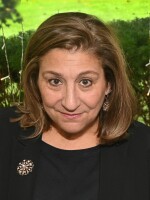The Department of Homeland Security continued the conversation about funding challenges before the House Appropriations Committee in Washington, D.C. this week.
With less than half the money her committee had two years ago, DHS Secretary for Science and Technology Tara O’Toole reiterated that the department is faced with choosing between NBAF and the continuation of mission-driven R&D. She also said DHS was in the middle of construction plans for new headquarters, which needed funding as well.
"Severe cuts to the S&T budget in recent years make it impossible to fund NBAF construction out of the S&T operating budget,” O’Toole told lawmakers at the hearing.
Last week, O’Toole said DHS would conduct its own study on whether the NBAF is feasible or necessary given the budget crunch.
Also on the table: Speculation on whether renovating the existing animal disease facility on Plum Island is an option.
Meanwhile, DHS is waiting for the final report from a committee of the National Academy of Science. The committee is evaluating updated safety and security provisions at the NBAF submitted by DHS.
Republican Rep. Robert Aderholt of Alabama, chairman of the subcommittee, asked DHS to come back with a scaled-down version of their projects that reflect the decreased funding available.
For more NBAF coverage, visit KCUR's Tracking NBAF page.


